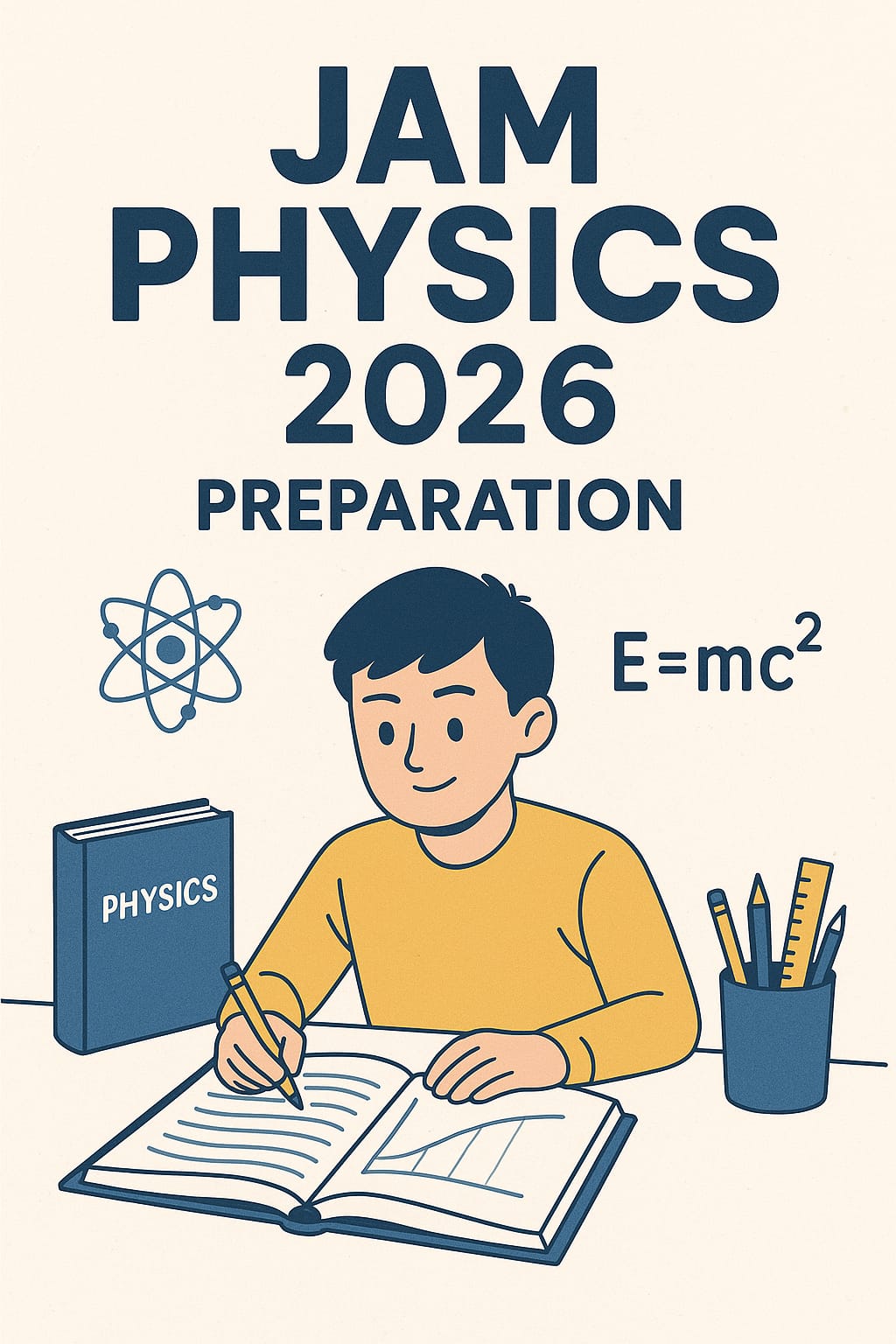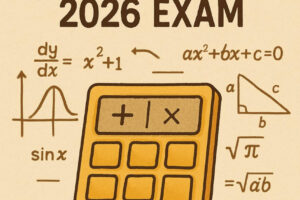
A Complete Beginner’s Guide (2026)
The Joint Admission Test for MSc (JAM) is one of the most prestigious entrance exams in India for students aiming to pursue postgraduate programs like MSc, Joint MSc-PhD, MSc-PhD dual degree, and other post-bachelor’s degree programs at the Indian Institutes of Technology (IITs), Indian Institute of Science (IISc), and National Institutes of Technology (NITs). Among all subjects, Physics remains one of the most competitive yet rewarding streams in JAM.
Why Choose JAM Physics?
Before diving into preparation, it’s essential to understand the opportunities JAM Physics opens up. Through JAM, you can get admission into:
MSc (Physics) in IITs like IIT Bombay, IIT Delhi, IIT Kanpur, etc.
MSc-PhD Dual Degree programs
Integrated PhD at IISc Bangalore
MSc in Applied Physics and interdisciplinary programs
Research fellowships and government jobs after postgraduation
A strong performance in JAM can lead you to a premier institute and pave the path for a rewarding career in academics, research, or industry.
IIT JAM Physics 2026: Exam Pattern Overview
Understanding the pattern is crucial before forming a strategy.
Section Type of Questions Number of Questions Marks
Section A Multiple Choice Questions (MCQ) 30 50
Section B Multiple Select Questions (MSQ) 10 20
Section C Numerical Answer Type (NAT) 20 30
Total – 60 100
Duration: 3 hours
Mode: Computer-based test
Negative Marking: Only in Section A (MCQ)
IIT JAM Physics 2026 Syllabus Breakdown
The IIT JAM Physics syllabus is broadly based on the graduation-level curriculum. Here’s the detailed topic-wise syllabus:
1. Mathematical Methods
Vector Calculus
Linear Algebra
Differential Equations
Fourier Series
Matrices
Probability and Statistics
Partial Derivatives
2. Mechanics and General Properties of Matter
Newton’s Laws
Conservation Laws
Rotational Motion
Gravitation
Elasticity
Surface Tension and Fluid Mechanics
Moment of Inertia
3. Oscillations, Waves, and Optics
Simple Harmonic Motion
Wave Equation
Superposition
Interference and Diffraction
Polarization
Laser and Optical Instruments
4. Electricity and Magnetism
Coulomb’s Law
Gauss’s Law
Electric Field and Potential
Capacitance
Magnetic Fields
Electromagnetic Induction
AC and DC Circuits
5. Kinetic Theory, Thermodynamics
Laws of Thermodynamics
Maxwell’s Relations
Heat Engines
Thermal Expansion
Kinetic Theory of Gases
6. Modern Physics
Black Body Radiation
Photoelectric Effect
Bohr’s Model
Nuclear Physics
Radioactivity
Particle Physics
7. Solid State and Devices
Crystal Structure
Semiconductors
Diodes and Transistors
Conductors and Insulators
8. Simple Circuits and Instruments
Thevenin & Norton Theorems
Oscilloscope
Bridges and Meters
Study Plan and Preparation Strategy
1. Know the Weightage
Although the entire syllabus is important, some chapters have traditionally carried more weight. Prioritize based on past trends:
Mechanics & Modern Physics: High weightage
Electricity and Magnetism: Consistently asked in depth
Mathematical Physics: Forms the foundation for problem-solving
2. Create a Weekly Timetable
Divide the syllabus based on complexity. A typical weekly plan could look like:
3 days – Major Concepts & Theory
2 days – Numerical Practice
1 day – Mock Tests
1 day – Revision
Ensure you dedicate 2-4 hours daily, depending on your routine and academic load.
3. Revise Regularly
Make concise notes for every chapter. Highlight formulas, derivations, and exceptions. Revise weekly so you retain information over the long term.
Mock Tests and PYQ Practice
Solving Previous Year Questions (PYQs) is non-negotiable. It helps you:
Understand question trends
Improve speed and accuracy
Identify weak areas
Also, take full-length mock tests every 2 weeks in the last 3 months before the exam.
Useful Mock Test Platforms:
Testbook
GATE Academy
Gyan Bindu Academy
Career Endeavour
Smart Time Management Tips
Focus on concept clarity over rote learning
Set chapter-wise daily goals
Use Pomodoro Technique (25 min study, 5 min break)
Keep a revision diary for formulas and key concepts
Mistakes to Avoid During JAM Physics Preparation
1. Ignoring Numerical Problems: JAM is heavily numerical, so avoid focusing only on theory.
2. Delayed Mock Practice: Don’t postpone mocks to the last month.
3. Over-Reliance on Coaching: Self-study is crucial; coaching can only supplement it.
4. Not Referring to the Official Syllabus: Always align your prep with the latest official syllabus.
5. Ignoring MSQs and NATs: These require a different approach than MCQs.
Final Revision Plan for Last 60 Days
Revise complete theory from notes
Solve 3–4 PYQs daily
Take a mock test every alternate day in the final 3 weeks
Avoid learning new topics in the final month
How GATEIIT Institute Helps in JAM Physics Preparation
GATEIIT (Gate Indian Institute of Tutorials) is one of the leading institutes in India for competitive science exams including IIT JAM Physics. Here’s how GATEIIT supports aspirants:
1. Structured Courses
GATEIIT provides well-structured online and offline courses specially curated for JAM Physics. The syllabus is covered extensively with topic-wise focus.
2. Experienced Faculty
The institute boasts of highly experienced mentors from IITs and reputed universities who provide in-depth conceptual teaching.
3. Comprehensive Study Material
Students get access to high-quality printed and digital notes, topic-wise problem sets, and solved PYQs which are updated regularly.
4. Regular Test Series
GATEIIT conducts full-length mock tests and section-wise quizzes based on the actual JAM pattern to help students assess their performance.
5. Doubt-Solving Support
Round-the-clock doubt resolution support is available via their app and Telegram channels.
6. Personal Mentorship
Each student is guided with a personalized study plan and performance analysis. This one-on-one mentorship is a game-changer for many toppers.
7. Online Learning Platform
GATEIIT also offers a user-friendly app and online platform where you can attend live classes, access recorded sessions, and download study resources anytime.
Source link



